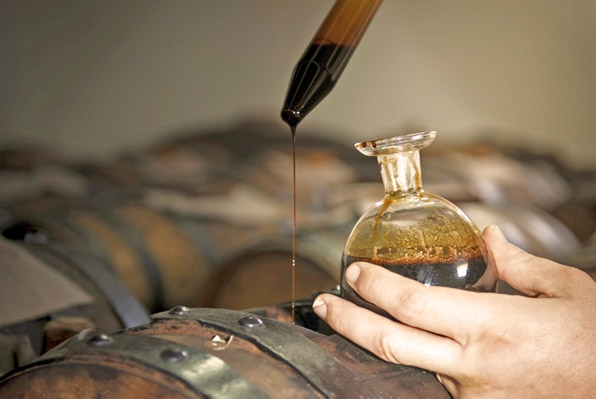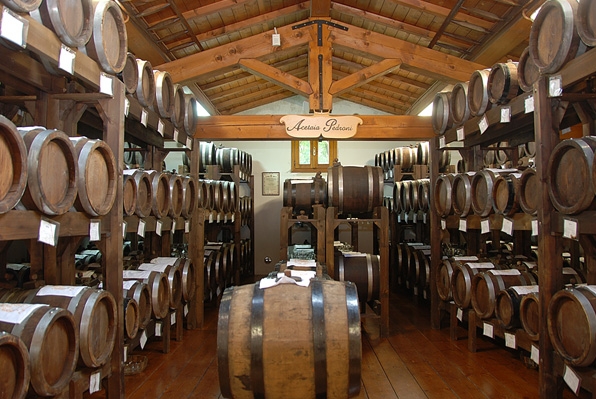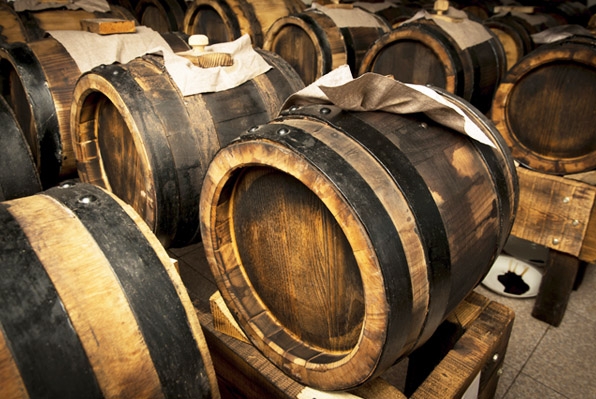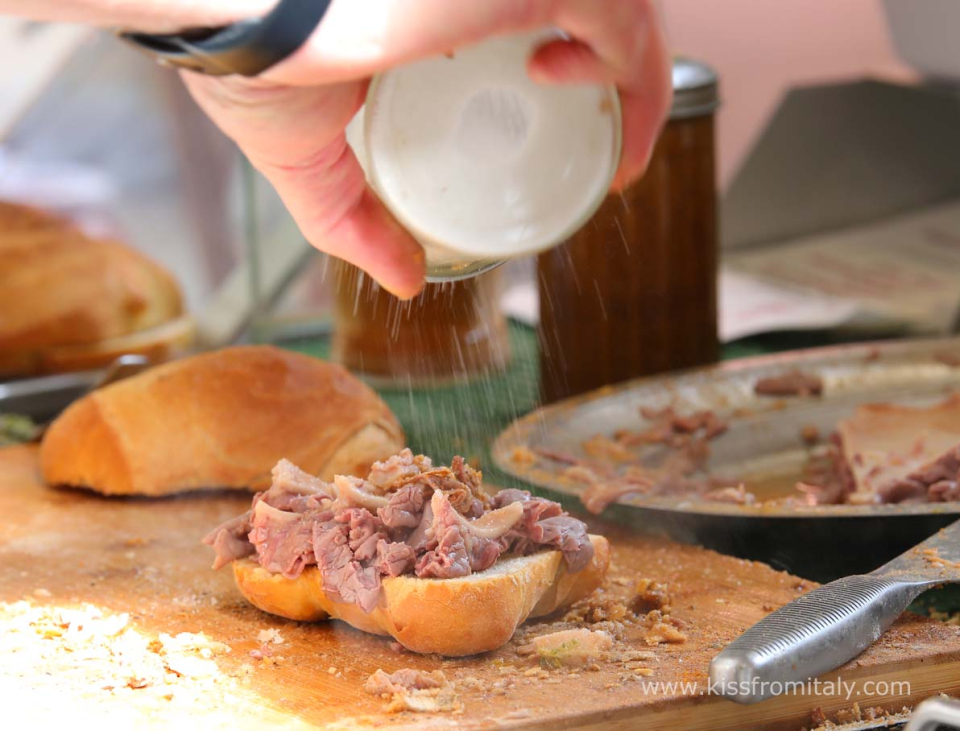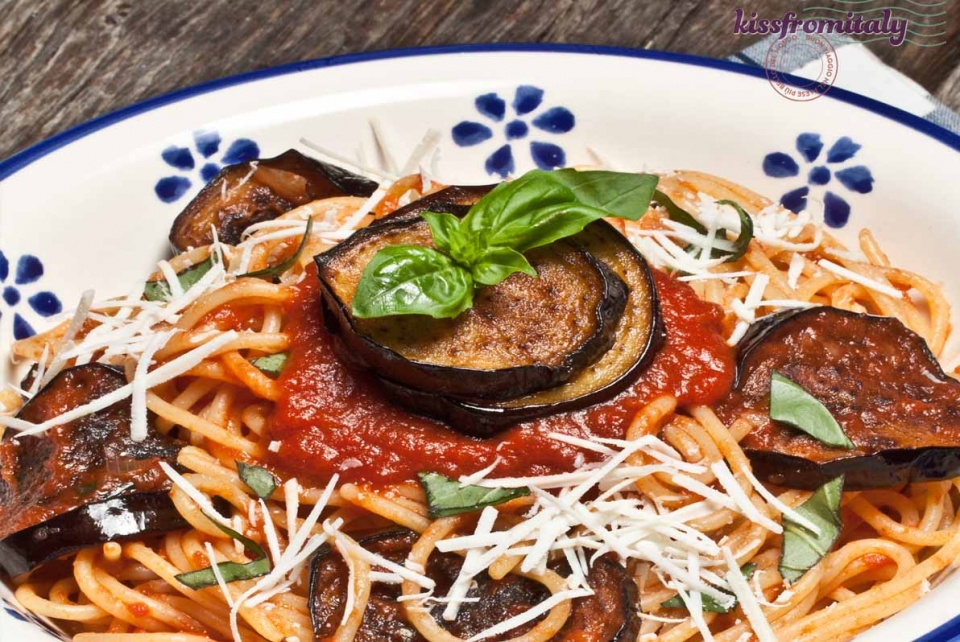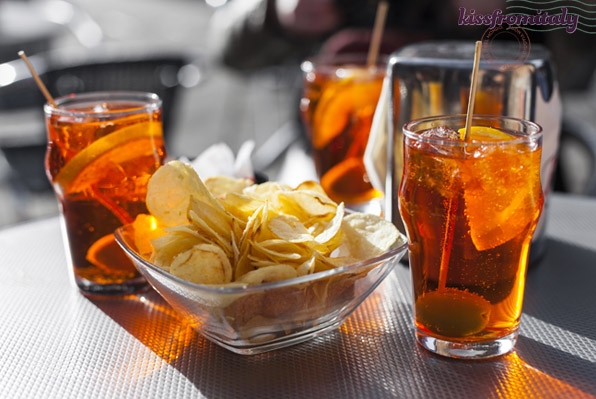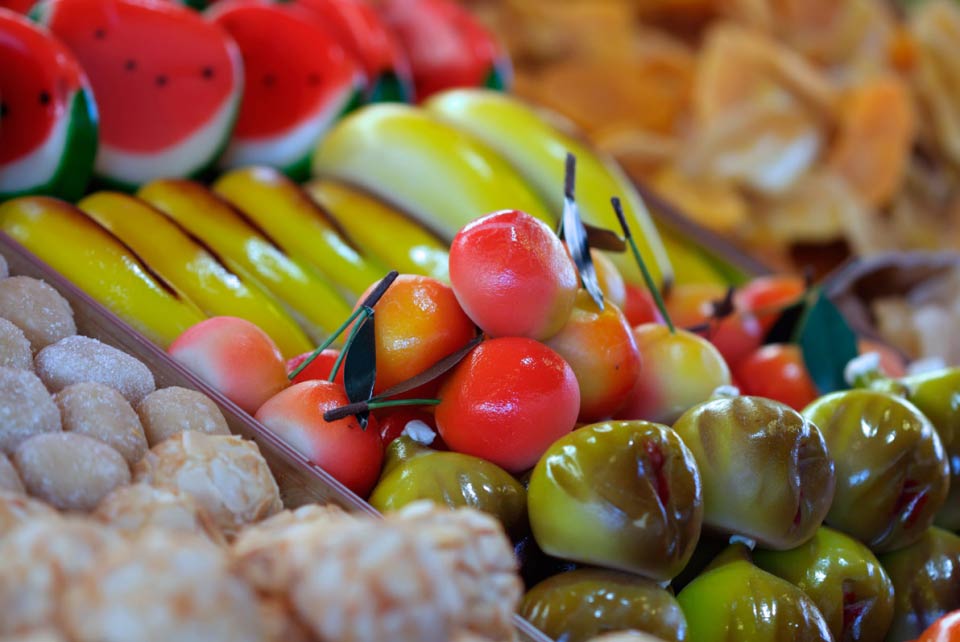
Learn more about delicious aceto balsamico di Modena, one of the most famous italian food specialties
Balsamic vinegar is a vinegar with a deep brown coloring originating from the Modena area in Northern Italy.
A Short History of Balsamic Vinegar
The first production of Balsamic Vinegar possibly dates back as far as the Romans. The first written reference to this vinegar was recorded in a twelfth-century poem by the monk Donzio of Canossa. It describes the visit of Holy Roman Emperor Henry III to Modena where he received a bottle of precious local vinegar as a gift. The term "balsamic vinegar" wasn't used until the 18th century. Up until then it was a local specialty and was virtually unknown abroad. That changed after the unification of Italy in 1860 when international trade began to bloom, and Italian products were exported more and more throughout Europe. Balsamic Vinegar became known as an exceptional vinegar for those with exquisite palates.
What is Traditional Balsamic Vinegar
While the term "aceto balsamico" is unregulated, there are three protected balsamic vinegars: "Aceto Balsamico Tradizionale di Modena" (Traditional Balsamic Vinegar of Modena), "Aceto Balsamico Tradizionale di Reggio Emilia" (Traditional Balsamic Vinegar of Reggio Emilia), and "Aceto Balsamico di Modena" (Balsamic Vinegar of Modena).
Traditional balsamic vinegar is always labeled Aceto Balsamico Tradizionale and carries the D.O.P. (Denominazione di Origine Protetta) stamp - the European Union certification that guarantees the ingredients, quality, and place of origin of the product.
Traditional Balsamic Vinegar is only sold in wax sealed 100ml bottles with unique identifying numbers. The spherical bottle has a narrow neck for the cork. For the 12 years matured balsamico the cap is red, for 25 years the color is gold and with extravecchio written on the label. Depending on the age of the vinegar a bottle could cost up to 200 dollars or more.
How Balsamic Vinegar is Made
Traditional Balsamic Vinegar is produced from reduced grape must - whole pressed grapes complete with juice, skin, seeds, and stems - from locally grown grapes, usually Lambrusco or Trebbiano. The must is cooked over a flame until concentrated by half and then left to ferment naturally for up to three weeks. The vinegar is then left to mature and further concentrate in wooden barrels for at least 12 years and often times to 25 years and up to 50 years.
The aging is extremely important in obtaining the characteristic taste and texture. The aceto balsamico matures in a set of 5 wooden barrels typically made of different woods: oak, cherry, chestnut, juniper Production and aging is done at a so called acetaia and if you are travelling around central Italy we strongly recommend a visit and tasting on site.
Traditional Balsamic Vinegar is glossy, thick like syrup and feels velvety on the tongue. The rich taste is a complex blend of sweet and sour that explodes in the mouth. Taste experts even pick up on notes of fig, molasses, cherry, chocolate or the smokiness of the wooden barrels the vinegar matured in.
Gallery
Balsamic Vinegar of Modena
A less expensive option is the Balsamic Vinegar of Modena. Protected with the I.G.P. stamp of the European Union for Protected Geographical Indication, it's made from grape must mixed with wine vinegar and produced exclusively in either Modena or Reggio Emilia.
Imitation Balsamic Vinegar
The popularity of traditional balsamic vinegar has led to imitation products flooding the market. If you grab a 5-dollar balsamic vinegar from the shelf of your local supermarket, it's really just a plain vinegar blended with sweetener and coloring.
How to Use it - Balsamic Vinegar Recipes
What you should never do is cook with it. Heating will kill its distinctive characteristics. It can be used over warm dishes, however, drizzle it over veal scaloppine, risotto or Italian stew. It also tastes great on grilled meat and seafood. Balsamic Vinegar is also delicious drizzled over strawberries, ice cream, pannacotta or other creamy desserts, and cheese. The possibilities are endless. A great classic and one of our personal favorites, is a few drops on a chunk of Parmesan cheese, an amazing match! Be careful not to overdo it, the intense flavor of the vinegar shouldn't cover your dish. A good rule of thumb is one teaspoon per person, but the flavor of the original aged balsamico is so strong that a few drops may be enough.
Health Benefits of Balsamic Vinegar
The word balsamic or balsamico in Italian comes from the Latin balsamum meaning curative or healing. In earlier centuries, balsamic vinegar was also used for medicinal purposes and continuing in modern times several health benefits have been attributed to the use of it. It's been suggested that regular consumption of Balsamic Vinegar helps lower cholesterol, supports healthy digestion, contributes to weight loss, improves the blood circulation, it's diabetes-friendly and can improve skin problems.
Balsamic Vinegar Tasting and Visit
You don’t need to be a foodie to enjoy a visit to an acetaia and a tasting of aceto balsamico on site. The area of production is in the provinces of Modena and Reggio Emilia, in the Emilia Romagna region. The local producers can be easily reached from Florence, Venice, Verona, Milan. KissFromItaly offers food tours and experiences that include visits at producers of the most authentic balsamic vinegar, see here for more information.


